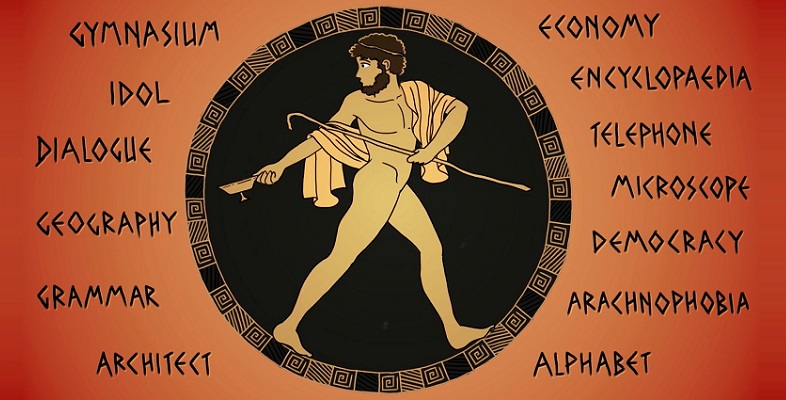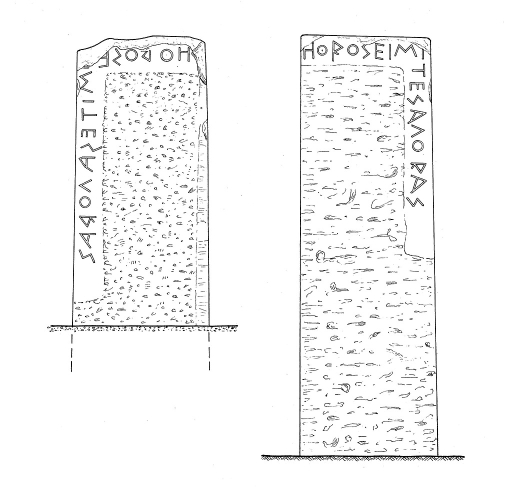4 Boundary stones
Boundary stones were an important feature of ancient Greece, marking the ownership of land and the transition from one type of space to another, e.g. from public to private. Two inscribed marble stones have been found on the west side of the Athenian agora (‘marketplace’), the civic and commercial hub of Athens. It was important to define the boundaries of the agora, as it was both public land and sacred space. Some individuals were not allowed to enter, including certain convicted criminals and young men who had not yet carried out their military service.
Activity 5 Reading the boundary stones
Remember that the inscriptions on the two stones are identical, although the words have been inscribed in different directions. The text begins:
ΗΟΡΟΣΕΙΜΙ
This is two words. Using your knowledge of the Greek verb ‘I am’, try to identify the position of the word break.
Discussion
The last four letters are ΕΙΜΙ. In standardised, lower-case Greek the words would read:
ὅρος εἰμί
Next, using the vocabulary provided, try to translate the first two words:
ὅρος εἰμί
- Vocabulary
- ὅρος, -ου, ὁ limit, boundary
Discussion
The words mean ‘I am a boundary’. The word ὅρος is related to ‘horizon’, the boundary-line of the visible surface of the earth. It was also used to refer to the ‘definition’ of a word, i.e. where its meaning begins and ends.
a.
nominative
b.
accusative
c.
genitive
The correct answer is c.
Finally, observing that τῆς ἀγορᾶς is in the genitive case, can you translate the inscription?
Discussion
The translation is:
I am a boundary of the agora.
There must have been many boundary stones throughout Athens and the surrounding countryside. In the early sixth century BCE, the Athenian lawgiver Solon claimed to have freed the earth by removing ‘the boundary stones (ὅρους) fixed in many places’. This somewhat obscure claim hints at a programme of radical social reform involving changes to the ownership of land. It was certainly controversial, as we can tell from Solon’s surviving poetry. Indeed, Solon even portrayed his own role in the controversy as that of a ὅρος, standing as an impartial mediator between two opposing parties, one of whom thought he had gone too far and the other, not far enough.

